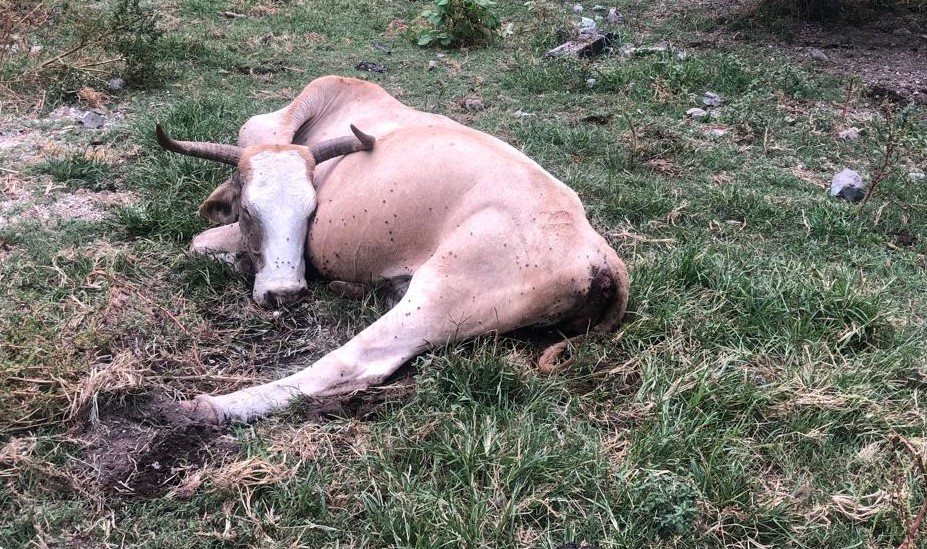Typing of the bovine rabies prediction curve in Nayarit during 2017
Abstract
According to epidemiological records from the Directorate of Zoosanitary Campaigns, from 2001 to October 2010 in Mexico, the prevalence of Bovine Paralytic Rabies increased from 3.80% to 5.63%. The livestock inventory published by INEGI in 2017 showed that there were 31,948,274 heads of cattle in Mexico and in Nayarit the cattle inventory was 522,496. In the state, the cattle are predominantly Creole, Zebu and, to a lesser extent, European breeds. Most of them are in an extensive system, which makes them susceptible to attack by bats, which live in caves, rock fissures, hollows in trunks, mines, sewers, archaeological ruins, abandoned houses, basements and wells. Therefore, the objective was to analyze the incidence and classify the prediction curve of bovine rabies in Nayarit during 2017. The incidence of bovine paralytic rabies in 15 municipalities of Nayarit was 2.8%, cases occurred both on the coast and in the mountains and most occurred in summer and fall. A mathematical equation for the prediction of this disease was classified for each different area and by substitution one for each season of the year.
References
AGUIAR LMS. 2007. Subfamília Desmodontinae. In: Reis NR, Peracchi AL, Pedro WA, Lima IP, editors. Morcegos do Brasil. Londrina: Nélio R. Reis. Pp. 39-43.
ALCÁNTARA-Quintana LE. 2001. Murciélagos y roedores del municipio de Tecomán, Colima, México. Universidad Autónoma de México, México.
BÁRCENAS-Reyes I, Loza-Rubio E, Zendejas-Martínez H, Luna-Soria H, Cantó-Alarcón GJ, Milián-Suazo F. 2015. Comportamiento epidemiológico de la rabia paralítica bovina en la región central de México, 2001–2013. Rev Panam Salud Publica. 38(5):396–402.
BRITO-Hoyos DM, Brito Sierra E, Villalobos Álvarez R. 2013. Distribución geográfica del riesgo de rabia de origen silvestre y evaluación de los factores asociados con su incidencia en Colombia, 1982–2010. Rev Panam Salud Publica. 33(1):8–14.
DALQUEST WW. 1955. Natural history of the vampire bats of Eastern Mexico. The American Midland Naturalist. 53 (1):79 - 87.
GREENHALL AM, Joermann G, Schmidt U, Seidel M. 1983. Desmodus rotundus, Vampire Bat. Mammalian Species. 202:6.
INEGI (Instituto Nacional De Estadísticas, Geografía e Informática). 2017. Anuario de Estadísticas del Estado De Nayarit. Instituto Nacional De Estadísticas, Geografía e Informática. México.
JIMÉNEZ A, Torres JL, López S. 1996. Situación epidemiológica de la rabia a nivel mundial y en México. Enfermedades infecciosas y microbiología. 16(1): 29-38.
LEE DN, Papes M, Van Den Bussche RA. 2012. Present and potential future distribution of common vampire bats in the Americas and the associated risk to cattle. PLoS One. 8:e42466.
MAYEN F. 2003. Haematophagous Bats in Brazil, their role in rabies transmission, impact public health, livestock industry and alternatives to an indiscriminate reduction of bat population. Journal of Veterinary Medical Science. (50):469-472.
MCNAB B. 1973. Energetics and the Distribution of Vampires. Journal of Mammalogy. 54(1):131-144.
NOGUEIRA MR, Lima IP, Moratelli R, Tavares VC, Gregorin R, Peracchi, AL. 2014. Checklist of Brasilian bats, with commentson original records. 10(4):808–821. http://dx.doi.org/10.15560/10.4.80
NORMA Oficial Mexicana NOM-056-ZOO-1995, Especificaciones técnicas para las pruebas diagnósticas que realicen los laboratorios de pruebas aprobados en materia zoosanitaria. SAGARPA, México.
NORMA Oficial Mexicana NOM-67-ZOO-2007 Campaña nacional para la prevención y control de la rabia en bovinos y especies ganaderas. SAGARPA, México.
ROMERO-Almaraz M, Aguilar A, Sánchez C. 2006. Murciélagos benéficos y vampiros: características, importancia, rabia, control y conservación. AGT Editor. México, D.F.
SUZÁN G. 2005. Desmodus rotundus. En: Ceballos G, Oliva G. Los mamíferos silvestres de México. México, D.F.: Comisión Nacional para el Conocimiento.
VALLADARES-Carranza B, Velázquez-Ordoñez V, Ortega-Santana C, Zamora-Espinosa JL, Peña-Betancur SD. 2015. Sistemas de producción; bovinos para abasto. Aspecto e importancia para la calidad e inecuación de la carne. in: padilla L.S. La crisis alimentaria y la salud en México. ISBN: 968-5573-42-3. México: Castellanos editores, S.A de C.V., Pp.117-137.
VILLA RB. 1966. Los murciélagos de México. Su importancia en la economía y salubridad, su clasificación, sistemática. Universidad Nacional Autónoma de México, México.
WILKERSON JA. 2000. Rabies update. Wilderness Environ Med. 11:31–9.





